The Ranks Of America’s Astronaut Corps Grew By 11 Today!
The ranks of America’s Astronaut Corps grew by 11 today!
After completing more than two years of basic training, our graduating class of astronauts is eligible for spaceflight. Assignments include the International Space Station, Artemis missions to the Moon, and ultimately, missions to Mars.
The class includes 11 astronauts, selected in 2017 from a record-setting pool of more than 18,000 applicants. This was more than double the previous record of 8,000 applicants set in 1978.
Meet the graduates:
Kayla Barron

“If you don’t love what you’re doing, you’re not going to be good at it. I think it’s a combination of finding things that you really love that will also be really challenging and will force you to grow along the way.”
This Washington native graduated from the U.S. Naval Academy with a bachelor’s degree in systems engineering. As a Gates Cambridge Scholar, which offers students an opportunity to pursue graduate study in the field of their choice at the University of Cambridge. Barron earned a master’s degree in nuclear engineering.
As a Submarine Warfare Officer, Barron was part of the first class of women commissioned into the submarine community, completing three strategic deterrent patrols aboard the USS Maine.
Zena Cardman

“Every STEM opportunity that I have ever gone down is because of some mentor who inspired me or some student who was ahead of me in school who inspired me.”
Zena Cardman is a native of Virginia and completed a bachelor’s degree in biology and master’s degree in marine sciences at The University of North Carolina, Chapel Hill. Her research has focused on microorganisms in subsurface environments, ranging from caves to deep sea sediments.
An intrepid explorer, Cardman’s field experience includes multiple Antarctic expeditions, work aboard research vessels as both scientist and crew, and NASA analog missions in British Columbia, Idaho, and Hawaii.
Raja Chari

“I grew up with the mentality that education is truly a gift not to be taken for granted.”
This Iowa native graduated from the U.S. Air Force Academy in 1999 with bachelor’s degrees in astronautical engineering and engineering science. He continued on to earn a master’s degree in aeronautics and astronautics from Massachusetts Institute of Technology (MIT) and graduated from the U.S. Naval Test Pilot School.
Chari served as the Commander of the 461st Flight Test Squadron and the Director of the F-35 Integrated Test Force. He has accumulated more than 2,000 hours of flight time in the F-35, F-15, F-16 and F-18 including F-15E combat missions in Operation Iraqi Freedom.
Matthew Dominick

“I get to work with incredible people that want to solve problems and are passionate about it. I really want to contribute to the world and this is how I want to do it.”
This Colorado native earned a bachelor’s degree in electrical engineering from the University of San Diego and a master’s degree in systems engineering from the Naval Postgraduate School. He also graduated from U.S. Naval Test Pilot School.
Dominick served on the USS Ronald Reagan as department head for Strike Fighter Squadron 115. He has more than 1,600 hours of flight time in 28 aircraft, 400 carrier-arrested landings and 61 combat missions.
Bob Hines

“As you get older, other things become important to you, like being a part of something that’s bigger than yourself. This human endeavor of exploration is something that’s really exciting.”
Bob Hines is a Pennsylvania native and earned a bachelor’s degree in aerospace engineering from Boston University. He is a graduate of the U.S. Air Force Test Pilot School, where he earned a master’s degree in flight test engineering. He continued on to earn a master’s degree in aerospace engineering from the University of Alabama.
Hines served in the U.S. Air Force and Air Force Reserves for 18 years. He also served as a research pilot at our Johnson Space Center. He has accumulated more than 3,500 hours of flight time in 41 different types of aircraft and has flown 76 combat missions in support of contingency operations around the world.
Warren Hoburg

“It was back in high school that I realized that I was really interested in engineering. I always liked taking things apart and understanding how things work and then I also really enjoy solving problems.”
Nicknamed “Woody”, this Pennsylvania native earned a bachelor’s degree in aeronautics and astronautics from MIT and a doctorate in electrical engineering and computer science from the University of California, Berkeley.
Hoburg was leading a research group at MIT at the time of his selection and is a two-time recipient of the AIAA Aeronautics and Astronautics Teaching Award in recognition of outstanding teaching.
Dr. Jonny Kim

“I fundamentally believed in the NASA mission of advancing our space frontier, all while developing innovation and new technologies that would benefit all of humankind.”
This California native trained and operated as a Navy SEAL, completing more than 100 combat operations and earning a Silver Star and Bronze Star with Combat “V”. Afterward, he went on to complete a degree in mathematics at the University of San Diego and a doctorate of medicine at Harvard Medical School.
Kim was a resident physician in emergency medicine with Partners Healthcare at Massachusetts General Hospital.
Jasmin Moghbeli

“Surround yourself with good people that have the characteristics that you want to grow in yourself. I think if you surround yourself with people like that you kind of bring each other up to a higher and higher level as you go.”
Jasmin Moghbeli, a U.S. Marine Corps major, considers Baldwin, New York, her hometown. She earned a bachelor's degree in aerospace engineering with information technology at MIT, followed by a master’s degree in aerospace engineering from the Naval Postgraduate School.
She is a distinguished graduate of the U.S. Naval Test Pilot School and has accumulated more than 1,600 hours of flight time and 150 combat missions.
Loral O’Hara

“I’m one of those people who have wanted to be an astronaut since I was a little kid, and I think that came from an early obsession with flying – birds, airplanes, rockets.”
This Houston native earned a bachelor’s degree in aerospace engineering at the University of Kansas and a Master of Science degree in aeronautics and astronautics from Purdue University. As a student, she participated in multiple NASA internship programs, including the Reduced Gravity Student Flight Opportunities Program, the NASA Academy at Goddard Space Flight Center, and the internship program at the Jet Propulsion Laboratory.
O’Hara was a research engineer at Woods Hole Oceanographic Institution, where she worked on the engineering, test and operations of deep-ocean research submersibles and robots. She is also a private pilot and certified EMT and wilderness first responder.
Dr. Frank Rubio

“I just figured it was time to take the plunge and try it. And so, I did and beyond all dreams, it came true.”
Dr. Francisco “Frank” Rubio, a U.S. Army lieutenant colonel, is originally from Miami. He earned a bachelor’s degree in international relations from the U.S. Military Academy and earned a doctorate of medicine from the Uniformed Services University of the Health Sciences.
Rubio served as a UH-60 Blackhawk helicopter pilot and flew more than 1,100 hours, including more than 600 hours of combat and imminent danger time during deployments to Bosnia, Afghanistan, and Iraq. He is also a board certified family physician and flight surgeon.
Jessica Watkins

“I’ve always been interested in exploring space. What’s out there and how can we as humans reach those outer stars and how can we learn more information about who we are through that process.”
This Colorado native earned a bachelor’s degree in geological and environmental sciences at Stanford University, and a doctorate in geology from the University of California, Los Angeles. Watkins has worked at Ames Research Center and the Jet Propulsion Laboratory.
Watkins was a postdoctoral fellow at the California Institute of Technology, where she collaborated on the Mars Curiosity rover, participating in daily planning of rover activities and investigating the geologic history of the Red Planet.
Learn more about the new space heroes right here: https://www.nasa.gov/newastronauts
Make sure to follow us on Tumblr for your regular dose of space: http://nasa.tumblr.com.
More Posts from Nasa and Others
Mars in a Box: How a Metal Chamber on Earth Helps us do Experiments on Mars

Inside this metal box, it’s punishingly cold. The air is unbreathable. The pressure is so low, you’d inflate like a balloon. This metal chamber is essentially Mars in a box — or a near-perfect replica of the Martian environment. This box allows scientists to practice chemistry experiments on Earth before programming NASA’s Curiosity rover to carry them out on Mars. In some cases, scientists use this chamber to duplicate experiments from Mars to better understand the results. This is what’s happening today.
The ladder is set so an engineer can climb to the top of the chamber to drop in a pinch of lab-made Martian rock. A team of scientists is trying to duplicate one of Curiosity’s first experiments to settle some open questions about the origin of certain organic compounds the rover found in Gale Crater on Mars. Today’s sample will be dropped for chemical analysis into a tiny lab inside the chamber known as SAM, which stands for Sample Analysis at Mars. Another SAM lab is on Mars, inside the belly of Curiosity. The SAM lab analyzes rock and soil samples in search of organic matter, which on Earth is usually associated with life. Mars-in-a-box is kept at NASA’s Goddard Space Flight Center in Greenbelt, Maryland.

This is Goddard engineer Ariel Siguelnitzky. He is showing how far he has to drop the sample, from the top of the test chamber to the sample collection cup, a small capsule about half an inch (1 centimeter) tall (pictured right below). On Mars, there are no engineers like Siguelnitzky, so Curiosity’s arm drops soil and rock powder through small funnels on its deck. In the photo, Siguelnitzky’s right hand is pointing to a model of the tiny lab, which is about the size of a microwave. SAM will heat the soil to 1,800 degrees Fahrenheit (1,000 degrees Celsius) to extract the gases inside and reveal the chemical elements the soil is made of. It takes about 30 minutes for the oven to reach that super high temperature.

Each new sample is dropped into one of the white cups set into a carousel inside SAM. There are 74 tiny cups. Inside Curiosity’s SAM lab, the cups are made of quartz glass or metal. After a cup is filled, it’s lifted into an oven inside SAM for heating and analysis.

Amy McAdam, a NASA Goddard geochemist, hands Siguelnitzky the sample. Members of the SAM team made it in the lab using Earthly ingredients that duplicate Martian rock powder. The powder is wrapped in a nickel capsule (see photo below) to protect the sample cups so they can be reused many times. On Mars, there’s no nickel capsule around the sample, which means the sample cups there can’t be reused very much.

SAM needs as little as 45 milligrams of soil or rock powder to reveal the secrets locked in minerals and organic matter on the surface of Mars and in its atmosphere. That’s smaller than a baby aspirin!
Siguelnitzky has pressurized the chamber – raised the air pressure to match that of Earth – in order to open the hatch on top of the Mars box.

Now, he will carefully insert the sample into SAM through one of the two small openings below the hatch. They’re about 1.5 inches (3.8 centimeters) across, the same as on Curiosity. Siguelnitzky will use a special tool to carefully insert the sample capsule about two feet down to the sample cup in the carousel.

Sample drop.

NASA Goddard scientist Samuel Teinturier is reviewing the chemical data, shown in the graphs, coming in from SAM inside Mars-in-a-box. He’s looking to see if the lab-made rock powder shows similar chemical signals to those seen during an earlier experiment on Mars.
Make sure to follow us on Tumblr for your regular dose of space: http://nasa.tumblr.com
Put to the Test: Orion Service Module
Blasted with sound, shaken for hours and pyro detonated, the Orion Service Module Completes Ground Tests at our Glenn Research Center
We recently completed a structural integrity evaluation on the test version of the Orion service module at our Plum Brook Station in Sandusky, Ohio. Designed to ensure the module can withstand launch atop the Space Launch System (SLS) rocket, the battery of tests was conducted in stages over a 16-month period.
The 13-ton European service module will power, propel and cool Orion, while supplying vital oxygen and water to its crew during future missions.
The Powerhouse: Space Launch System and Orion

Our Space Launch System is an advanced launch vehicle that will usher in a new era of human exploration beyond Earth’s orbit. SLS, with its unparalleled power and capabilities, will launch missions to explore deep-space destinations aboard our Orion spacecraft.

What is Orion? Named after one of the largest constellations in the night sky and drawing from more than 50 years of spaceflight research and development, the Orion spacecraft will be the safest, most advanced spacecraft ever built. It will be flexible and capable enough to take astronauts to a variety of deep destinations, including Mars.
Welcome to the Buckeye State

In November 2015, the full-sized test version of the Orion service module arrived at Cleveland Hopkins Airport aboard an Antonov AN-124. After being unloaded from one of the world’s largest transport aircraft, the module was shipped more than 50 miles by truck to Plum Brook for testing.
Spread Your Wings

The first step of the service module’s ground test journey at Plum Brook’s Space Power Facility, saw one of its 24-foot solar array wings deployed to verify operation of the power system. The test confirmed the array extended and locked into place, and all of the wing mechanisms functioned properly.
Can You Hear SLS Now?

The SLS will produce a tremendous amount of noise as it launches and climbs through our atmosphere. In fact, we’re projecting the rocket could produce up to 180 decibels, which is louder than 20 jet engines operating at the same time.
While at the Reverberant Acoustic Test Facility, the service module was hit with more than 150 decibels and 20-10,000 hertz of sound pressure. Microphones were placed inside the test environment to confirm it matched the expected acoustic environment during launch.
After being blasted by sound, it was time to rock the service module, literally.
Shake Without the Bake
Launching atop the most powerful rocket ever built – we’re talking more than eight million pounds of thrust – will subject Orion to stresses never before experienced in spaceflight.
To ensure the launch doesn’t damage any vital equipment, the engineering team utilized the world’s most powerful vibration table to perform nearly 100 different tests, ranging from 2.5 Hz to 100 Hz, on the module in the summer of 2016.
Gotta Keep ‘Em Separated
The team then moved the Orion test article from the vibration table into the high bay for pyroshock tests, which simulated the shock the service module will experience as it separates from the SLS during launch.
Following the sound, vibration and separation tests, a second solar array wing deployment was conducted to ensure the wing continued to properly unfurl and function.
Headed South for the Summer

The ground test phase was another crucial step toward the eventual launch of Exploration Mission-1, as it validated extensive design prep and computer modeling, and verified the spacecraft met our safety and flight requirements.
Make sure to follow us on Tumblr for your regular dose of space: http://nasa.tumblr.com
Join NPR today at 5 p.m. EDT for #NPRSpaceJam with astronauts Serena Auñón, Cady Coleman, Samantha Cristoforetti, plus our chief scientist Ellen Stofan. Submit your questions!

Tomorrow at 5ET I’ll be interviewing three astronauts (read all about them here) live on Periscope and Snapchat (user: nprnews).
What would you like me to ask them? Submit questions here.
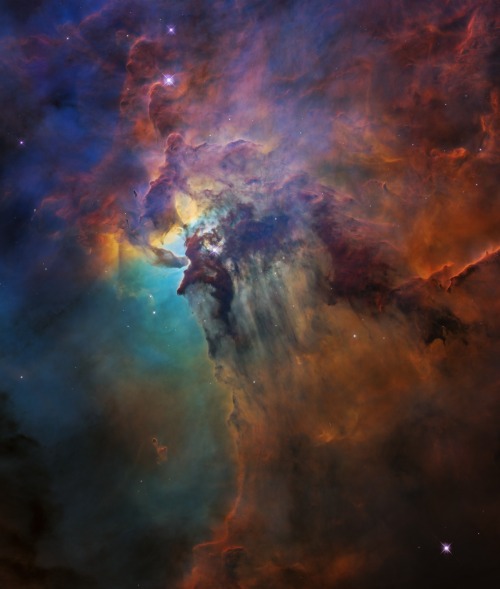
The Lagoon Nebula
This colorful image, taken by our Hubble Space Telescope between Feb. 12 and Feb. 18, 2018 , celebrated the Earth-orbiting observatory’s 28th anniversary of viewing the heavens, giving us a window seat to the universe’s extraordinary tapestry of stellar birth and destruction.
At the center of the photo, a monster young star 200,000 times brighter than our Sun is blasting powerful ultraviolet radiation and hurricane-like stellar winds, carving out a fantasy landscape of ridges, cavities, and mountains of gas and dust.
This region epitomizes a typical, raucous stellar nursery full of birth and destruction. The clouds may look majestic and peaceful, but they are in a constant state of flux from the star’s torrent of searing radiation and high-speed particles from stellar winds. As the monster star throws off its natal cocoon of material with its powerful energy, it is suppressing star formation around it.
Make sure to follow us on Tumblr for your regular dose of space: http://nasa.tumblr.com.
Where Will We Land On Mars?

What?
You’ve heard us say that we’re on a journey to Mars, but the Red Planet is big. Once we get there, where will we land the first humans? We’re holding the first Landing Sites/Exploration Zones Workshop for Human Missions to the Surface of Mars to figure it out. This first workshop was held Oct. 27-30, 2015 at the Lunar and Planetary Institute in Houston.
Why?
The goal of this workshop was to collect proposals for locations on Mars that would be of high scientific research value while also providing natural resources to enable explorers to land, live and work safely on the Red Planet. Determining where we will land humans on Mars is a multi-year process. There was around 45 proposal teams at the workshop. This was the first of many workshops to determine the best landing site for human exploration on Mars.

Why Now?
We plan to use existing assets at Mars, such as the Mars Reconnaissance Orbiter (MRO) and the Odyssey spacecraft, to support the selection process of potential Exploration Zones. However, the life expectancy of MRO and Odyssey are limited. We are eager to take advantage of the remaining operational years of those Martian images to gather high resolution maps of potential Exploration Zones while the spacecraft remain operational.
Stay Updated
The workshop will be aired live USTREAM starting at 2 p.m. EDT Tuesday, Oct. 27.
This blog post will also be updated daily with a recap from the workshop’s events.
For a full schedule of the event visit: http://www.hou.usra.edu/meetings/explorationzone2015/pdf/program.pdf
Day 1 Recap:

"There is no such thing as robotic exploration. All exploration is human exploration — the robot is just a tool.” - John Grunsfeld, NASA Associate Administrator for the Science Mission Directorate
Day one of the workshop answered a lot of basic questions about why looking at landing sites now is important for the future of our journey to Mars.
Attendees heard from many presenters, including Ellen Ochoa, Director of Johnson Space Center and John Grunsfeld, Associate Administrator of NASA’s Science Mission Directorate.
Experts explained that in order to leverage our current assets at Mars and start the process of picking possible landing sites, we need to start the discussion now.
This data will Inform our efforts to define what we need as far as future reconnaissance capabilities at Mars and drive where we send robotic landers to get ground truth.
Check back tomorrow for the day two update, and watch live on USTREAM starting at 9 a.m. EDT.
BONUS: Have questions about potential landing sites on Mars? We’ll be hosting a live social Q&A tomorrow at 7 p.m. EDT. Two NASA experts and one 15-year old student on one of the proposal teams will be answering your questions. Tune in on USTREAM and use #askNASA.
Day 2 Recap:

The second day of the Mars Landing Sites Workshop was filled with presentations from various proposal groups. Contributors made cases for where the best science could be collected on the Martian surface.
We also had the opportunity to hear from a young presenter, Alex Longo. A 15-year old student from Raleigh, N.C.
Longo also joined us for the social Q&A where we answered questions from #askNASA. He, along with two NASA experts, fielded questions that ranged from specifics about the workshop, to chatting aboutMars mysteries.
Tune in tomorrow to watch more of the presentations and see potential Mars landing sites! Watch live on USTREAM starting at 9 a.m. EDT.
Check back tomorrow for the day three update.
Day 3 Recap:

The third day of the workshop included presentations from the remaining proposal teams. This final day of presentations will lead into the last day of the workshop, when groups will discuss all of the ideas shared during the past week.
The day got really exciting when our Space Exploration Vehicle (SEV) made an appearance. This SEV concept is designed to be flexible, depending on the exploration destination. The pressurized cabin can be used for surface exploration of planetary bodies, including near-Earth asteroids and Mars.
Tomorrow is the final day of the workshop and will include group discussions. Participants will have the chance to assess the proposed sites and talk about the future steps needed for selecting a potential human landing site for our journey to Mars.
Watch these discussions live on USTREAM starting at 9 a.m. EDT.
Final Day Recap:

The final day of our workshop on potential Mars landing sites included discussions on the presentations that were made throughout the week.
Participants also had the opportunity to hear from NASA experts like Jim Green, director of planetary science, about future exploration and our journey to Mars.
Video of the full workshop will be available on the Lunar Planetary Institute’s YouTube channel. For more information and updates on our journey to Mars, visit HERE.
What is the real raw advice for someone wanting to pursue a career at NASA?
What’s Up for April 2016?
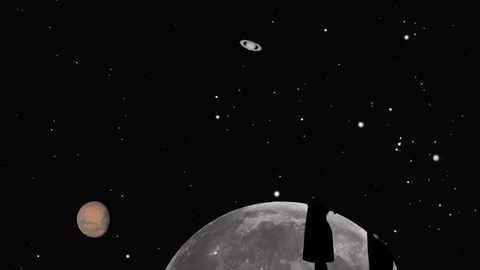
Jupiter, Mars, the Lyrid meteor shower and 2016’s best views of Mercury are all visible in the sky this month.
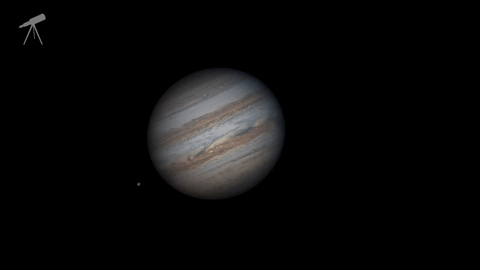
Jupiter, where our Juno mission will begin orbiting on July 4, continues to shine almost as brightly this month as last. And eagle-eyed telescope viewers will see a transit, a shadow transit, an occultation and an eclipse of Jupiter’s moons- all in one night: April 6-7.
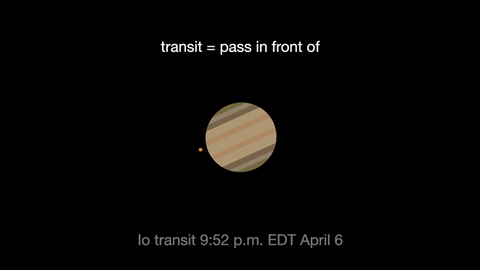
Io transits first, crossing the planet beginning at 9:52 p.m. EDT. It’s shadow can be seen less than an hour later.
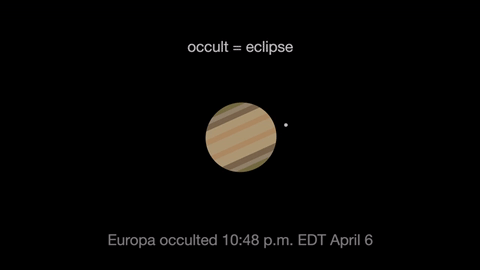
Next Jupiter occults, or eclipses, Europa as Europa slips behind the giant planet at 10:48 p.m. EDT. At 3 a.m. Europa reappears from its eclipse, dramatically leaving the shadow of Jupiter.
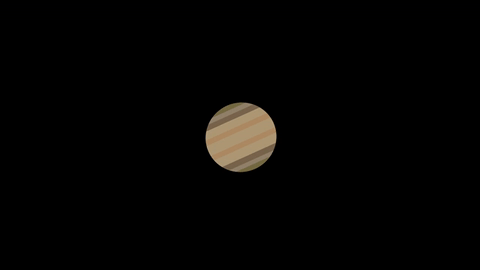
Ganymede transits the planet beginning at 1:01 EDT April 7.
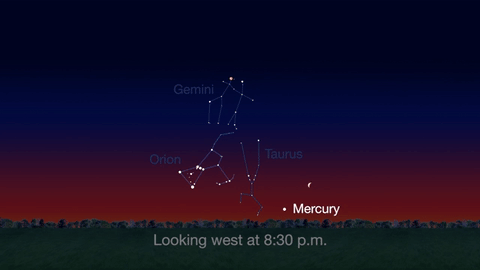
Check out the other planets in April, too! Mercury is always a challenging object to view, but this month you can spot it after sunset about 10 degrees above the horizon. Through a telescope you can see its phase. It will appear like a tiny crescent moon, with about 1/3 of its disk illuminated.
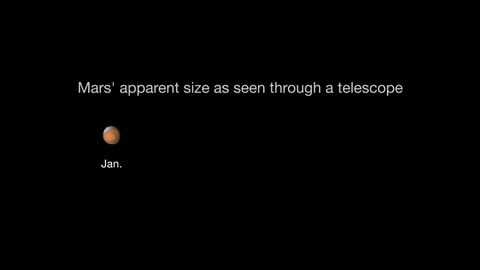
Mars is finally visible before midnight this month. It rises in the southeast at about 10 p.m. by the end of April. The best observing of Mars will be when it is highest in the sky. This means a few hours before dawn. Its brightness and apparent size increase dramatically this month. By month’s end, Mars appears nearly twice as bright as at the beginning of the month.
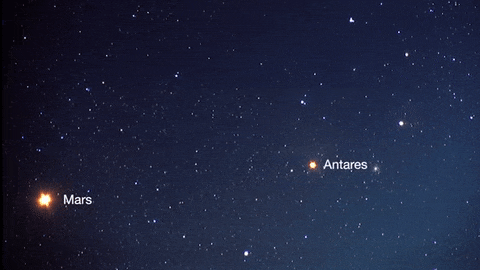
About mid-month you’ll see Mars near its rival in the sky: the similar-colored red supergiant star Antares. The name “Antares” means “equal to or rival of Mars”.
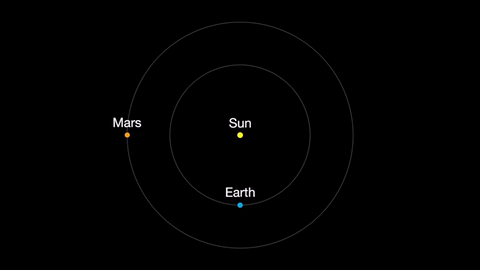
Earth moves almost twice as fast as Mars does, so it often passes Mars in their race around the sun. This causes “retrograde motion”: an illusion we see from our viewpoint on Earth.
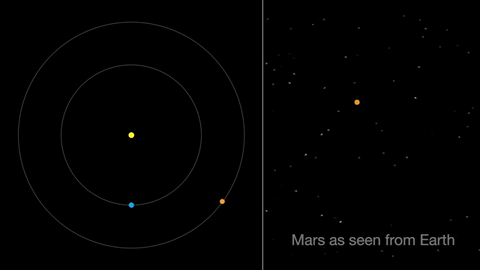
Retrograde motion happens as Earth catches up to Mars, causing Mars to appear slow to slow its eastward motion against the stars. After a few days, when Earth has overtaken Mars, the Red Planet seems to move westward. Eventually, Earth moves far enough around its orbit that Mars appears to be moving eastward again.
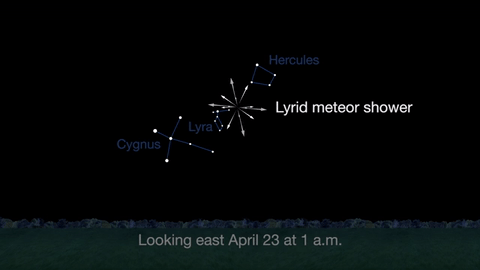
April features one meteor shower, the Lyrids. This year the Lyrids are marred by the full moon. The best time to view will be just before dawn on April 23, when the constellation Lyra is overhead and the moon will be near to setting.
With all of these great things to spot in the sky this month, be sure to get outside and look up!
Make sure to follow us on Tumblr for your regular dose of space: http://nasa.tumblr.com
5 Signs You Might Be Ready to Apply to be an Astronaut
Did you hear? Astronaut applications are open! Here are a few signs that might mean you’re ready to apply:
1. You Don’t Mind Having Roommates

When you’re an astronaut, you have to work and live with your crew mates for extended periods of time. It’s important to the mission and your safety that everyone can collaborate and work together.
2. You LOVE Space

If the Milky Way, planets and space travel doesn’t excite you then this might not be the perfect job for you. But if you love galaxies, space station research and deep space exploration, then maybe you should take a look at our application.
3. Adventure Doesn’t Scare You

Being an astronaut means that you get to take part in adventures that most people will never experience. Imagine: sitting on the launch pad in the Orion spacecraft, atop a rocket that’s getting ready to launch. You’ll travel farther into space than any other humans have been and help push the boundaries of technology in the proving ground of deep space lunar orbits, leading the way for future missions to Mars.
4. You Want to be on the Cutting Edge of Science

Not only do astronauts get to travel to space, but they also get to conduct really cool research in microgravity. Did you know that right now they’re growing Zinnia flowers on the International Space Station? This research could help with our future deep space exploration and could teach us a few things about growing plants on Earth. Learn more about all the awesome research on the space station HERE.
5. You’re Not Afraid of Heights

One of the coolest things about being an astronaut, is that you get to go to SPACE! At the very least, you’ll travel to the International Space Station, which is 250 miles above Earth. Or, you could be one of the first astronauts to travel to a distant asteroid or even Mars!
Interested in applying to become an astronaut? You’re in luck, applications open Dec. 14! Learn about some common myths about becoming an astronaut HERE.
Apply to be one of our astronauts HERE.
Make sure to follow us on Tumblr for your regular dose of space: http://nasa.tumblr.com
Astronaut Journal Entry - Launch & Docking
Currently, six humans are living and working on the International Space Station, which orbits 250 miles above our planet at 17,500mph. Below you will find a real journal entry, written in space, by NASA astronaut Scott Tingle.
To read more entires from this series, visit our Space Blogs on Tumblr.

The launch went as planned. Our Soyuz spacecraft did a great job getting the three of us to the International Space Station (ISS).

A week later, it all seems like a blur. The bus driver played me a video of my family and friends delivering their good luck messages. After exiting the bus at the launch pad, I was fortunate to have the Soyuz chief designer (Roman) and NASA’s associate administrator for Human Exploration and Operations (Bill Gerstenmaier) walk me to the stairs and elevator that would take us to the top of the rocket for boarding. The temperature at the pad was approximately -17 degrees centigrade, and we were wearing the Russian Polar Bear suits over our spacesuits in order to stay warm. Walking in these suits is a little hard, and I was happy to have Roman and Bill helping me.

We walked into the fog created by the systems around the rocket, climbed the ladder, and waved goodbye. My last words before launch were to Bill, “Boiler Up!”. Bill is a fellow and very well-known Boilermaker. We strapped in, and the launch and docking were nominal. But I will add that the second stage cutoff and separation, and ignition of the third stage was very exciting. We were under approximately 4 Gs when the engine cutoff, which gave us a good jolt forward during the deceleration and then a good jolt back into the seat after the third stage ignited. I looked at Anton and we both began to giggle like school children.
We spent two days in orbit as our phase angle aligned with ISS. Surprisingly, I did not feel sick. I even got 4 hours of sleep the first night and nearly 6 hours the second night. Having not been able to use my diaper while sitting in the fetal position during launch, it was nice to get out of our seats and use the ACY (Russian toilet). Docking was amazing. I compared it to rendezvousing on a tanker in a fighter jet, except the rendezvous with ISS happened over a much larger distance. As a test pilot, it was very interesting to watch the vehicle capture and maintain the centerline of ISS’s MRM-1 docking port as well as capturing and maintaining the required speed profile.

Just like landing at the ship, I could feel the vehicle’s control system (thrusters) making smaller and faster corrections and recorrections. In the flight test world, this is where the “gains” increase rapidly and where any weaknesses in the control system will be exposed. It was amazing to see the huge solar arrays and tons of equipment go by my window during final approach. What an engineering marvel the ISS is. Smooth sailing right into the docking port we went!

About an hour later, after equalizing pressures between the station and Soyuz, we opened the hatch and greeted our friends already onboard. My first view of the inside of the space station looked pretty close to the simulators we have been training in for the last several years. My first words were, “Hey, what are you guys doing at Building 9?”. Then we tackled each other with celebratory hugs!

Find more ‘Captain’s Log’ entries HERE.
Follow NASA astronaut Scott Tingle on Instagram and Twitter.
Make sure to follow us on Tumblr for your regular dose of space: http://nasa.tumblr.com.
A View into the Past

Our Hubble Space Telescope just found the farthest individual star ever seen to date!
Nicknamed “Earendel” (“morning star” in Old English), this star existed within the first billion years after the universe’s birth in the big bang. Earendel is so far away from Earth that its light has taken 12.9 billion years to reach us, far eclipsing the previous single-star record holder whose light took 9 billion years to reach us.
Though Earendel is at least 50 times the mass of our Sun and millions of times as bright, we’d normally be unable to see it from Earth. However, the mass of a huge galaxy cluster between us and Earendel has created a powerful natural magnifying glass. Astronomers expect that the star will be highly magnified for years.
Earendel will be observed by NASA’s James Webb Space Telescope. Webb's high sensitivity to infrared light is needed to learn more about this star, because its light is stretched to longer infrared wavelengths due to the universe's expansion.
-
 vinceatlas liked this · 1 year ago
vinceatlas liked this · 1 year ago -
 alspictaideto liked this · 1 year ago
alspictaideto liked this · 1 year ago -
 percyjacksonwriter liked this · 2 years ago
percyjacksonwriter liked this · 2 years ago -
 swegadalious liked this · 2 years ago
swegadalious liked this · 2 years ago -
 inflightpilottraining liked this · 3 years ago
inflightpilottraining liked this · 3 years ago -
 pleek liked this · 4 years ago
pleek liked this · 4 years ago -
 kuoriainen liked this · 4 years ago
kuoriainen liked this · 4 years ago -
 vanesssa liked this · 4 years ago
vanesssa liked this · 4 years ago -
 jims-h liked this · 4 years ago
jims-h liked this · 4 years ago -
 sillyrhubarb liked this · 4 years ago
sillyrhubarb liked this · 4 years ago -
 npqn liked this · 4 years ago
npqn liked this · 4 years ago -
 alienwithaddiction liked this · 4 years ago
alienwithaddiction liked this · 4 years ago -
 kindabonhomie liked this · 4 years ago
kindabonhomie liked this · 4 years ago -
 takiminaa liked this · 4 years ago
takiminaa liked this · 4 years ago -
 greetings-fiends liked this · 4 years ago
greetings-fiends liked this · 4 years ago -
 tellme13secrets liked this · 4 years ago
tellme13secrets liked this · 4 years ago -
 sorryimsogrossfriend liked this · 4 years ago
sorryimsogrossfriend liked this · 4 years ago -
 reagay2531 liked this · 4 years ago
reagay2531 liked this · 4 years ago -
 swimming-in-stardust liked this · 4 years ago
swimming-in-stardust liked this · 4 years ago -
 red-robin-stan liked this · 4 years ago
red-robin-stan liked this · 4 years ago -
 magoskatsoufis liked this · 4 years ago
magoskatsoufis liked this · 4 years ago -
 nini6007 liked this · 4 years ago
nini6007 liked this · 4 years ago -
 confirmedworm liked this · 4 years ago
confirmedworm liked this · 4 years ago -
 iambasilgnome liked this · 4 years ago
iambasilgnome liked this · 4 years ago -
 enderfae liked this · 4 years ago
enderfae liked this · 4 years ago -
 millworker68 liked this · 4 years ago
millworker68 liked this · 4 years ago -
 albertg73 liked this · 4 years ago
albertg73 liked this · 4 years ago -
 buffy1958 liked this · 4 years ago
buffy1958 liked this · 4 years ago -
 usafphantom2 reblogged this · 4 years ago
usafphantom2 reblogged this · 4 years ago -
 usafphantom2 liked this · 4 years ago
usafphantom2 liked this · 4 years ago -
 kastianrose liked this · 4 years ago
kastianrose liked this · 4 years ago -
 thesupercuteandfuzzy liked this · 5 years ago
thesupercuteandfuzzy liked this · 5 years ago -
 theoriginaltraitor liked this · 5 years ago
theoriginaltraitor liked this · 5 years ago
Explore the universe and discover our home planet with the official NASA Tumblr account
1K posts